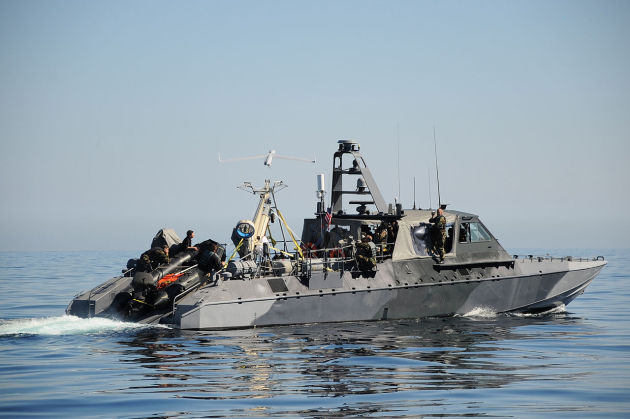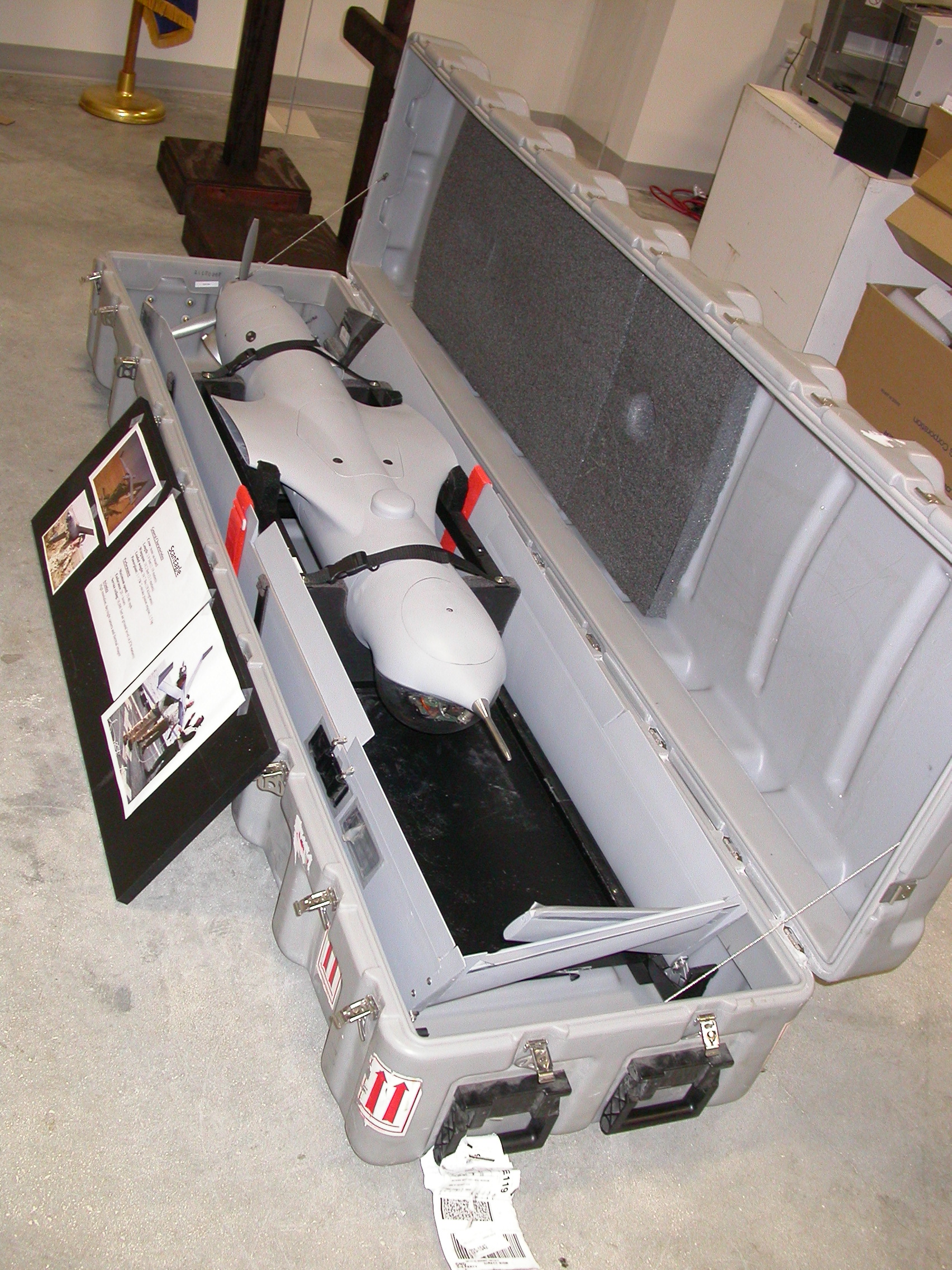ScanEagle UAV (Unmanned Aerial Vehicle)
Special Thanks to the The Navy SEAL Museum Ft Pierce for this article.
ScanEagle General Characteristics
Crew: none on-board
Length: 3.9 feet (1.19 meters)
Wingspan: 10.2 feet (3.1 meters)
Loaded weight: 39.7 lbs (18 kilograms)
Powerplant: 1 × 3W 2-stroke piston engine, 1.5 hp
Maximum speed: 55-80 mph
Endurance: 20 + hours
Service ceiling: 16,000 feet air ground level (4,876 meters)
This miniature robotic aircraft (drone) can carry various optic and sensor technologies, including electro-optical and infrared cameras on gimbal mounts for tracking stationary and moving targets, giving SEALs the ability to monitor enemy concentrations, vehicle and personnel movement, buildings, and terrain features. ScanEagles can loiter on station for over 15 hours and are capable of withstanding harsh environments and heavy weather including high wind and heavy rain.
One of the operational advantages of the ScanEagle is its flexible catapult launch capability and skyhook recovery system, which is essentially a rope hanging from a 50 foot pole. It can be flown from forward battlefields, mobile vehicles and small boats such as the Mark V SOC. It flies pre-programmed missions or ad hoc remote control flights directed by pilots on the ground.
ScanEagles first flew in April, 2002 and since then have come to play a vital role on the War on Terror. The drone made headlines in late 2012 when Iran claimed to have captured one. The US Navy downplayed Iran’s intelligence coup in an article in The New York Times, which quoted Vice Adm. Mark I. Fox, Deputy Chief of Operations, plans and strategy as saying, “They could have gone to Radio Shack and captured the same ‘secret’ technology.”
A ScanEagle from the USS Bainbridge gave the Navy SEAL snipers who rescued Captain Richard Phillips on the Maersk Alabama lifeboat (also in our collection) vital intelligence.



Leave a Reply
You must be logged in to post a comment.